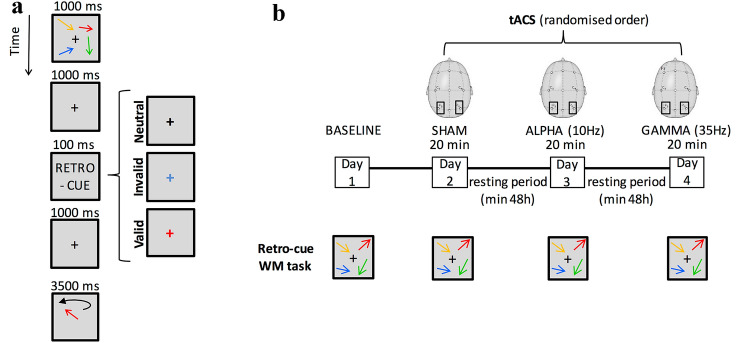Fig. 1.
The working memory (WM) retro-cueing task and paradigm. a Participants memorized a display of four arrow stimuli differing in orientation and color. Following a delay period, one of the four colored arrows reappeared in a random orientation and participants matched it as closely as possible to the orientation in the original display. In 70% of the trials during the delay, a colored retro-cue was presented highlighting an item that was more likely to be later probed. In these trials, the probe either matched the cued items (validly cued trials, N = 62) or it did not (invalidly cued trials, N = 26). In the remaining 30% of the trials (N = 38), a neutral cue was present during the delay. b Participants performed the working memory retro-cue task in a pre-stimulation session with no tACS (baseline), followed by three experimental sessions at least 48 h apart during which they performed the same WM task while receiving 20 min of bilateral parietal (P3 and P4 on 10–20 EEG system) tAC stimulation at either 10 Hz (α band), 35 Hz (γ band), or Sham. The order of the stimulation conditions was pseudo-randomized across participants

